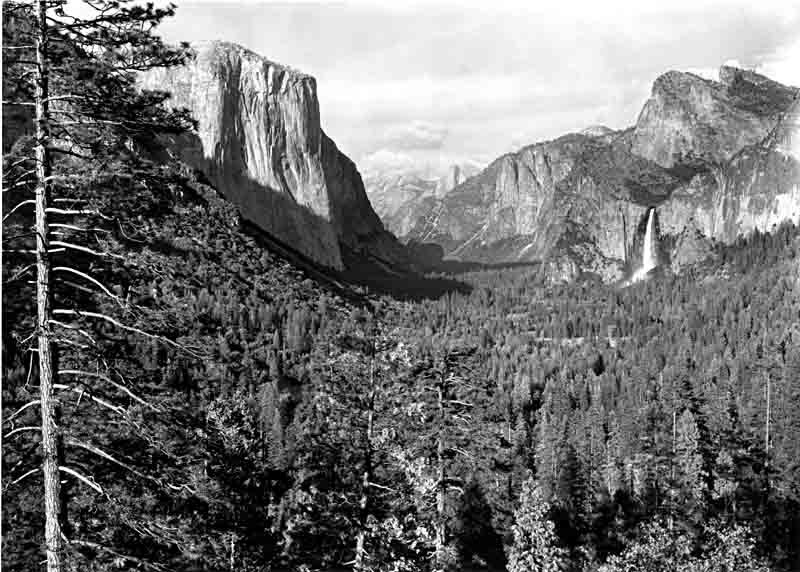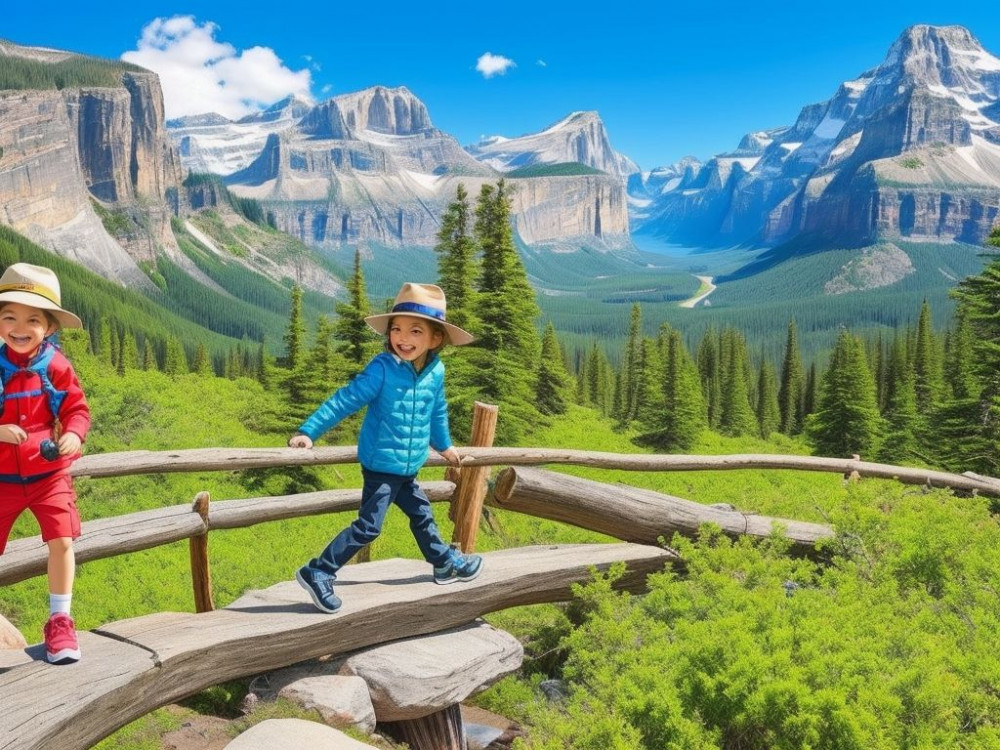Need an escape? Try Yosemite National Park! Mountains, waterfalls – it’s packed with natural delights. Come with us and see why this is one of America’s favorite spots. Let’s explore and discover the beauty of Yosemite!
Introduction
In the heart of California’s Sierra Nevada mountains lies Yosemite National Park. It’s a wonderland of awe-inspiring beauty, with its towering granite cliffs, majestic waterfalls, and diverse ecosystems. At over 1,200 square miles, there’s something for everyone—from avid hikers to leisurely strollers.
Half Dome and El Capitan stand as testaments to nature’s grandeur, drawing climbers from all around the world. Yosemite is also home to an array of wildlife—black bears, coyotes, mule deer, and over 165 species of birds. Plus, there’s a unique blend of habitats—from meadows to Giant Sequoia forests.
To experience Yosemite, visitors must immerse themselves in its beauty. They can take a stroll through Mariposa Grove and marvel at the Giant Sequoia trees, or feel the spray from Bridalveil Fall. The park transforms throughout the seasons, from wildflowers in spring to snow in winter—a paradise for skiers.
Yosemite National Park is an adventure waiting to be explored. It’s rockslides will make you question your life choices, but the beauty of nature will fill your senses and create memories that last a lifetime. Come and experience the magic of Yosemite—you won’t want to miss it!
Location and History
Tucked away in the Sierra Nevada Mountains of California, Yosemite National Park is one of America’s most renowned natural wonders. It’s history dates back thousands of years, with evidence of human habitation as far back as 3,000 years ago. The Ahwahneechee and Miwok Native American tribes have left their mark, from rock art to ancient settlements. In 1890, Yosemite became the third national park established in the United States.
The park is home to majestic granite cliffs like El Capitan and beautiful waterfalls such as Yosemite Falls, making it an awe-inspiring destination for visitors from around the world. Beyond its scenic grandeur, Yosemite has been a part of conservation efforts, spearheaded by notable figures like John Muir.

The story of park ranger Randy Morgenson serves as a reminder of the beauty and power of nature within Yosemite. In 1987, Randy went missing during a routine patrol near Tuolumne Meadows. After an extensive three-month search, he was not found alive.

Yosemite National Park is a timeless symbol of the planet’s natural wonders. It’s beauty and history remind us of our duty to preserve these precious ecosystems for future generations.
Geography
The geography of Yosemite National Park is extraordinary! It’s captivating landscapes encompass granite cliffs, cascading waterfalls, ancient sequoia groves, and serene meadows. This iconic park covers an expansive 748,436 acres in the western Sierra Nevada mountains of California.
It has many unique features. From the majestic Half Dome and El Capitan to the stunning Yosemite Valley, each corner offers something special. The park’s elevation ranges from 2,127 to 13,114 feet (648 to 3,997 meters), creating a variety of ecosystems and climates.
To make the most of your visit to Yosemite, consider these suggestions:
- Take advantage of the park’s vast trail network. Embark on hikes that suit your fitness level and interests. Explore the Mariposa Grove or attempt the cables of Half Dome – each adventure promises unforgettable experiences.
- Plan your visit during less busy times. Avoiding peak seasons will let you connect with nature and explore popular places, without feeling overwhelmed by crowds.
Lastly, engage with knowledgeable park rangers. Attend their programs or join guided nature walks to learn more about the park’s history and wildlife.
Follow these tips to have an enriching and memorable experience in Yosemite National Park. Discover its grandeur, immerse yourself in its diverse landscapes, and leave with a deep appreciation for this wonder of nature.
Climate
Yosemite National Park is known for its wild climate. Summers are hot and dry with temps ranging from 70-90°F. Winters are cold with temps dropping to 30°F and heavy snowfall. Spring brings mild weather and blooms, while fall offers beautiful foliage. Afternoons during summer often bring thunderstorms.
The park’s elevation influences the climate. Higher up in the mountains the temperatures are cooler and there is more precipitation. Yosemite Valley, at an elevation of 4,000 feet, is milder than areas above 8,000 feet. This variety in climate allows for a diverse range of plants and animals.
Visitors must be prepared for quick changes in the weather. Even during summer when days are usually warm, thunderstorms can happen without warning. Bring layers of clothing that can be easily added or removed depending on conditions.
Fun Fact: Yosemite National Park is home to North America’s tallest waterfall – Yosemite Falls – with a height of 2,425 feet (739 meters). Experience the grandeur of towering sequoias and the cuteness of squirrels – Yosemite National Park has it all!
Flora and Fauna

Yosemite National Park boasts a diverse and vibrant ecosystem. There, majestic sequoias stand tall alongside 1500 enchanting wildflowers! In addition, 300 black bears, 80 bobcats, and 20 golden eagles call the park home. Visitors can also witness the rare snow plant and flowering dogwood. Plus, the park’s sanctuary status provides refuge for mountain lions and rare Sierra Nevada bighorn sheep.
Explore Yosemite’s beauty! Hike through pristine meadows or gaze up at towering granite cliffs. For an even richer experience, join guided nature walks led by knowledgeable rangers who can teach you about the park’s biodiversity.
Yosemite National Park: explore nature’s wonders and get lost in the adventure!
Ecosystem
Yosemite National Park is a place of natural beauty. There’s a diverse ecosystem, packed with wildlife, plant species, and breathtaking features. Check out the biodiversity:
Flora
1,400+ plant species, including Giant Sequoias, Jeffrey Pines, and California Black Oak.
Fauna
400+ vertebrate species, such as black bears, bobcats, coyotes, and the endangered Sierra Nevada bighorn sheep.
Lakes and RiversMirror Lake and Merced River are just two of Yosemite’s mesmerizing lakes and rivers, providing habitats for aquatic creatures and stunning views.
Plus, the park also has peregrine falcons and spotted owls. Did you know Yosemite Valley was carved by glaciers during the last ice age, nearly one million years ago? (Source: National Park Service)
Kudos to Yosemite National Park for their conservation efforts, even Mother Nature would approve!
Conservation
Conserving Yosemite National Park is key for keeping its natural beauty and ecological balance. Three areas of focus are:
- Wildlife Protection – safeguarding the rare and endangered animals and their habitats.
- Ecosystem Management – monitoring air and water quality, as well as controlling invasive species.
- Sustainable Practices – using renewable energies, reducing waste, and educating visitors.
Other conservation efforts include fire management, climate change adaptation, and protecting cultural resources. Fun Fact: the USA started the national park concept, with Yellowstone being the first in 1872. [Source: National Parks Service]
Enjoy your inner survivalist in Yosemite, with thrilling activities like cliff-navigating and bear-encountering!
Recreation
Treat yourself to a peaceful getaway at Yosemite National Park with a delightful blend of activities! Enjoy hikes, camp under the stars, fish in tranquil lakes and rivers, or try your hand at rock climbing. You can even spot some wildlife – from black bears to majestic birds.
Mirror Lake and Half Dome are just two of the many hidden gems waiting to be discovered. As the evening sky turns into a canvas of orange and pink, take a hike to Glacier Point and feel a deep sense of awe and admiration for this remarkable place. Recreation at Yosemite National Park is an experience like no other.
Tourism
Touring Yosemite National Park is a magical experience, with its magnificent landscapes and diverse wildlife. Enjoy hiking, camping, horseback riding, and take a scenic drive through the wilderness.
From San Francisco: Yosemite Park Guided Day Trip
Here’s a comprehensive overview of tourism in Yosemite National Park, including visitor count and popular activities:
| Year | Visitor Count (in millions) | Popular Activities |
|---|---|---|
| 2017 | 4.3 | Hiking |
| 2018 | 4.2 | Camping |
| 2019 | 4.5 | Horseback Riding |
| 2020 | 3.8 | Scenic Drives |
Plus, explore unique features like sequoia groves, granite cliffs, and awe-inspiring waterfalls.
San Francisco: Yosemite National Park & Giant Sequoias Hike
Make lasting memories in Yosemite National Park – book your visit now! Don’t miss the chance to take in amazing views of nature’s beauty.
Future
The future of Yosemite National Park is bright. It’s captivating beauty and wildlife will continue to draw visitors. Conservation, restoration, and protection are key to preserving this iconic landscape.
Technology can also help. Virtual reality tours and interactive exhibits can let people explore without damaging the environment. Research on wildlife conservation will help protect endangered species like the red fox and bighorn sheep.
Joint efforts by government agencies, local communities, and environmental organizations can sustainably manage visitor numbers. They can also protect sensitive areas from overuse and degradation, and ensure equitable access.
It’s up to us to safeguard this natural treasure for future generations. Through responsible stewardship and wise choices, we can keep Yosemite National Park special.
It’s worth noting the history behind Yosemite too. In 1890, a preservation movement began in America. Led by John Muir and President Roosevelt, Yosemite National Park was born. This park stands as a tribute to their vision.
FAQ
Where is Yosemite National Park located?
Yosemite National Park is located in the state of California, in the western United States.
What is the best time to visit Yosemite National Park?
The best time to visit Yosemite National Park is during spring (April to June) and fall (September to October) when the weather is pleasant, and the park offers breathtaking views.
Are pets allowed in Yosemite National Park?
Yes, pets are allowed in specific areas of Yosemite National Park. However, they must be on a leash at all times and are not permitted on hiking trails or in park buildings.
Can I camp in Yosemite National Park?
Yes, camping is allowed in Yosemite National Park. The park offers a range of camping options, including campgrounds and backcountry camping. Reservations are highly recommended, especially during peak seasons.
Are there any shuttle services available in Yosemite National Park?
Yes, Yosemite National Park offers a free shuttle service called the Yosemite Valley Shuttle. The shuttle operates within the valley and provides transportation to major points of interest, campgrounds, and lodging areas.
Are there any lodging options available within Yosemite National Park?
Yes, Yosemite National Park offers various lodging options, including lodges, cabins, tent cabins, and campgrounds. Reservations for lodging should be made well in advance, especially during peak tourist seasons.




Leave a Reply